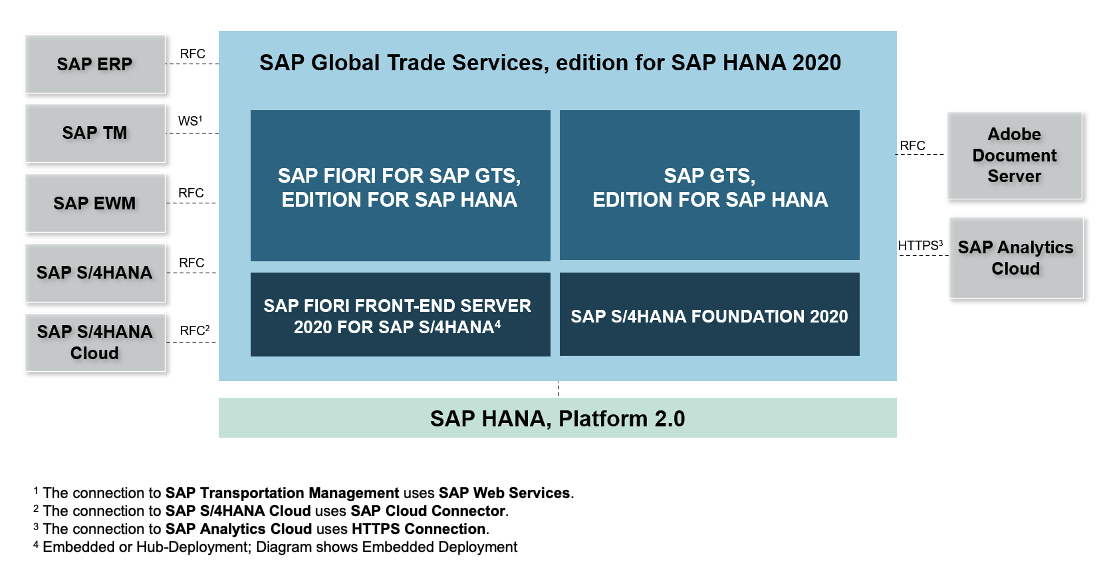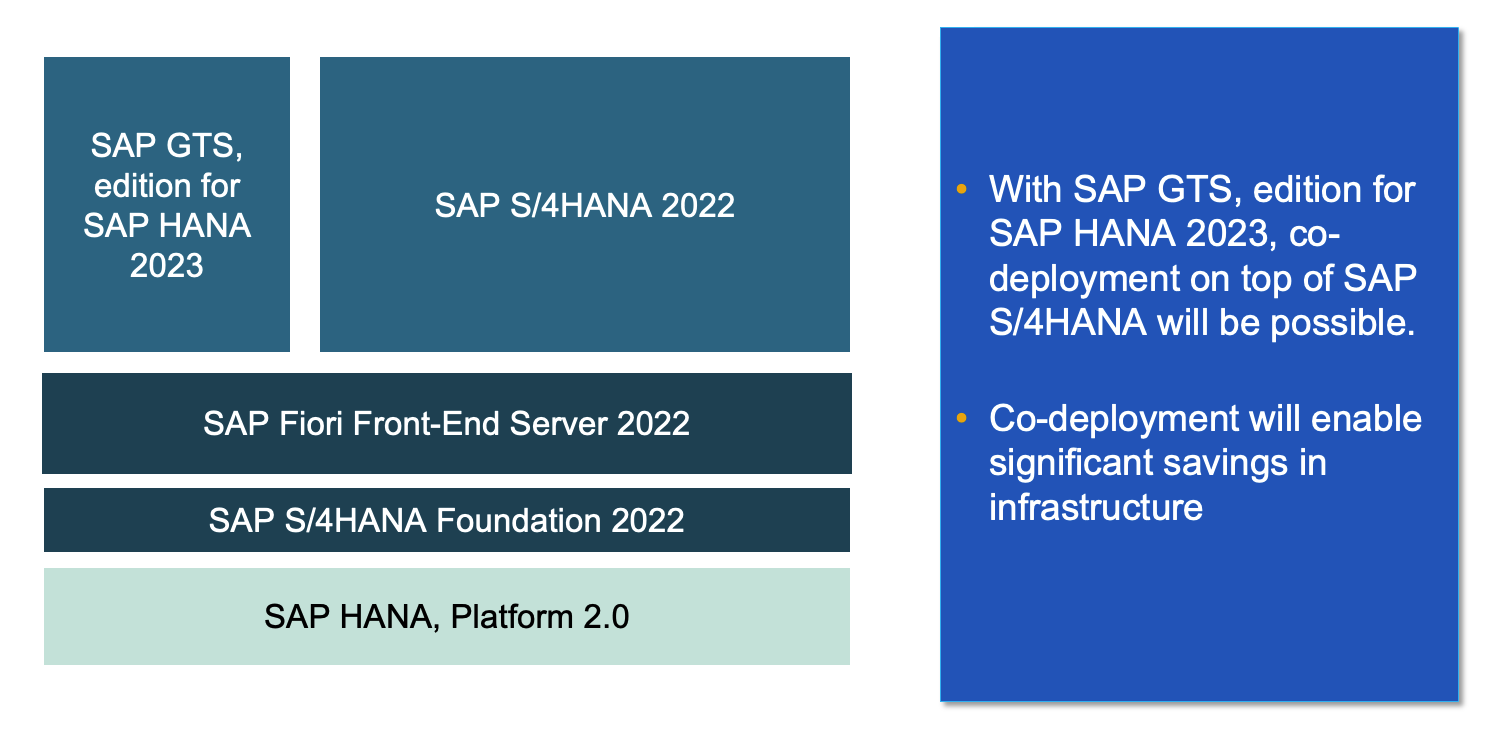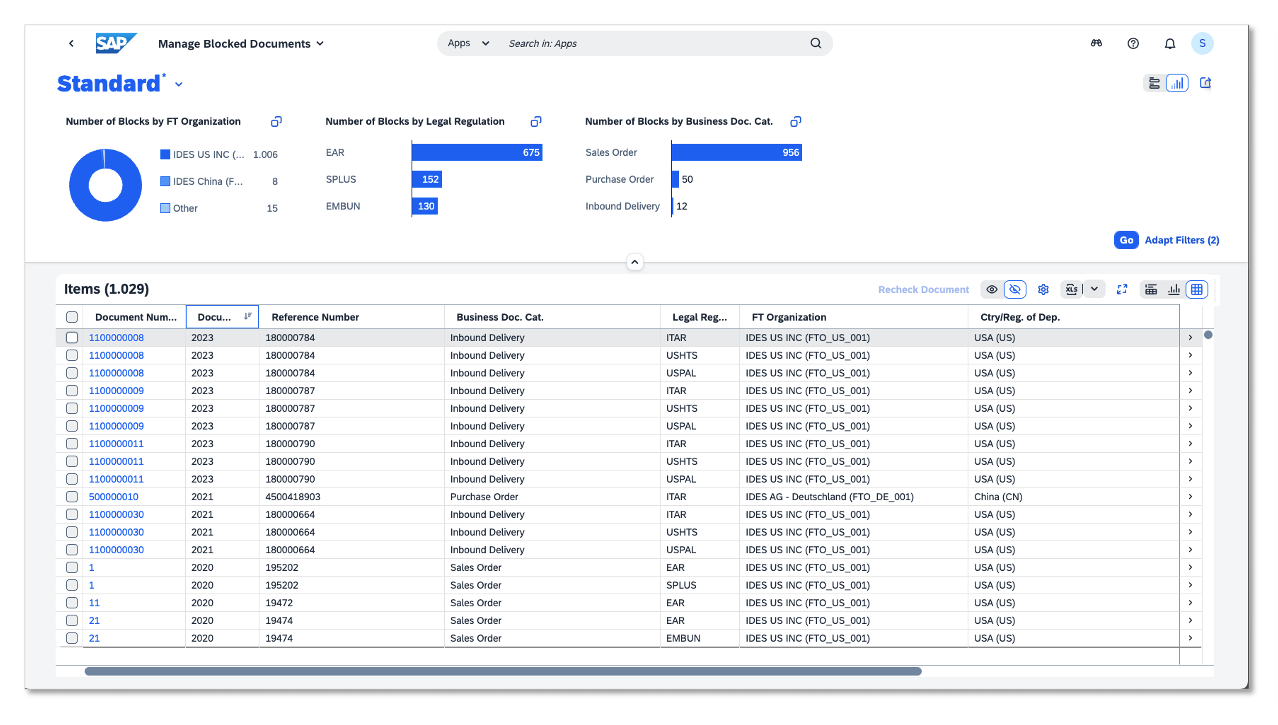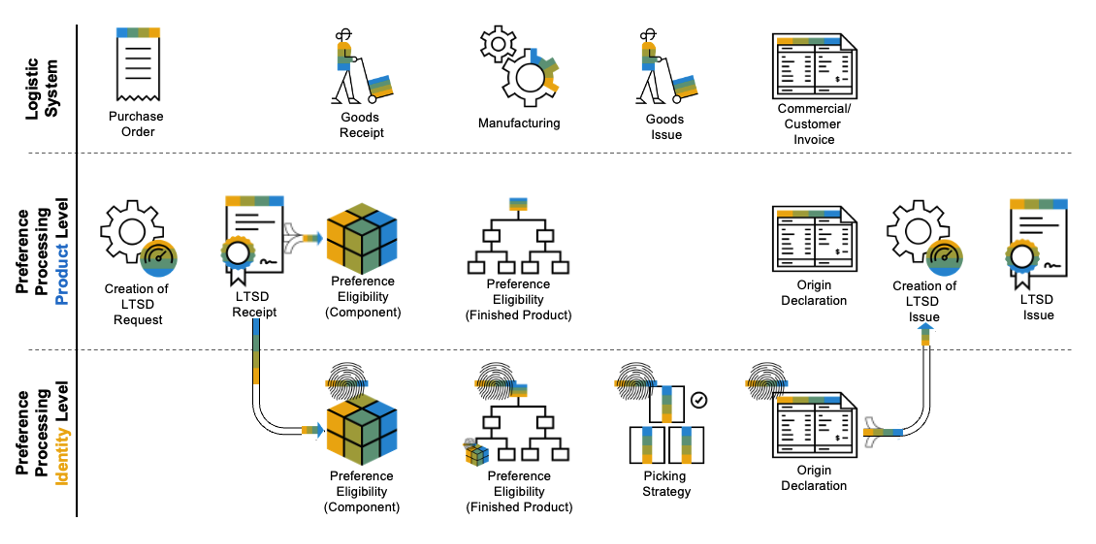
SAP GTS (Global Trade Services): Complete Solution for Compliance, Customs, and Foreign Trade
SAP Global Trade Services (GTS) supports companies in the compliant handling of international trade processes. From sanctions list screening and customs clearance to free trade agreements, SAP GTS covers all areas: compliance management, customs management, trade preference management, and electronic compliance reporting. With flexible deployment options, the solution integrates seamlessly into existing SAP systems.


Table of Contents:
- Overview and Deployment Options
- Compliance Management
- Customs Management
- Trade Preference Management
- Electronic Compliance Reporting
- Conclusion
- Sources
Today, global trade is both an engine for growth and a source of enormous complexity. Technology, digitalization, and global logistics networks have made the world seem smaller and more connected. Goods can be transported across continents in a matter of days, information flows in real time, and customers expect fast deliveries at competitive prices. On the other hand, companies are faced with an ever-growing number of regulations, trade agreements, and legal requirements.
Behind every seemingly smooth cross-border transaction lies a web of customs regulations, export controls, and security regulations. This complexity makes it necessary to automate processes, minimize risks, and create transparency about global goods flows at all times. This is exactly where SAP Global Trade Services (SAP GTS) comes in.
Overview and Deployment Options
SAP GTS offers companies the opportunity to make their international trade processes efficient, secure, and compliant. Whether it's automated checking of sanctions lists, correct calculation of customs duties and taxes, or compliance with free trade agreements, the system helps companies meet legal requirements while reducing costs and time expenditure. This flexibility is invaluable, especially in times of geopolitical uncertainty and constantly changing trade rules. For companies, this means they can respond more quickly to market changes, minimize risks, and focus more on growth and innovation.
A major advantage of SAP GTS is its simple connection to SAP ERP, SAP S/4HANA, or external feeder systems. SAP GTS offers a wide range of integration options and ensures seamless embedding in logistic and financial processes.

It adapts to the individual needs of companies and remains up to date with international regulations thanks to regular upgrades. There are a variety of deployment options in terms of system architecture and integration, such as on-premise, where companies run SAP GTS on their own hardware and control the system and data themselves. Alternatively, companies can host their data in the cloud, where a distinction is made between the private edition and the public edition. Both cloud options have lower infrastructure costs and require less effort for operation, maintenance, and updates than the on-premise version, with the private cloud offering more predictability and flexibility than the public cloud in terms of maintenance and updates. Last but not least, there is also the option (from GTS Edition for Hana 2023) of co-deployment, a hybrid form between on-premise and cloud, where companies can benefit from lower infrastructure costs. In addition, co-deployment allows the move to the cloud to take place gradually without having to replace existing systems immediately.

Which of these deployment options is right for your company depends on various factors. We would be happy to show you the advantages and disadvantages of each option in detail and support you with our team of experts in planning, implementation, and any open questions you may have.
If you are not yet using SAP GTS and are wondering whether it makes sense to use SAP GTS for your foreign trade processes in the future, here is a brief overview of the functional range that can be covered with SAP GTS:
Compliance management
- Sanctions party list screening: Automatic checking of business partners against national and international embargo and sanctions lists. Potential risks are thus identified at an early stage so that trade can be prevented before it is too late.
- Export control/legal control: Ensuring that no prohibited or license-required goods are exported without authorization. For each export transaction, GTS automatically checks whether a license is required and has been maintained. Validity period, quantity limits, destination, and the products concerned are the relevant criteria that the system checks so that it can assign the appropriate license. In addition, country-specific trade laws and export regulations (such as dual use, US re-export, etc.) are also mapped in the system.
- Embargo check: An embargo is a government trade ban or restriction against a specific country. A distinction is made between a total embargo and a partial embargo. In the case of a partial embargo, only certain groups of goods are excluded from trade, while in the case of a total embargo, all trade with business partners from that country is prohibited. The GTS performs the embargo check synchronously when creating documents and, in the event of an embargo, blocks all subsequent processes and cancels the transaction.
- Classification: A central element for all export control checks and thus the basis for the systematic checking and assignment of the product to the required license. Maintenance is carried out in the product master and forms the basis for an automated export process that ensures compliance with legal regulations, country laws, and export control rights.

Customs Management
- Customs clearance: Automated creation and transmission of customs declarations for import/export processes. The relevant data for customs is transferred to GTS when the transaction data is created in the upstream system, where it is replicated in the form of a customs document. If data is missing in the upstream system, the system notifies the user of the incompleteness of the data.
- Integration with customs authorities: Electronic communication with national customs systems (e.g., ATLAS in Germany). The release (for exports AES 3.0, for imports 10.1, as of 10/2025) is updated at regular intervals and involves significant changes and formal requirements.
- Transit procedures: Support for procedures such as T1/T2 for the movement of customs goods within and outside the EU.
- Customs processes: Inventory management with separation of customs and free status (released for free circulation), e.g., customs warehousing procedures or inward processing. This reduces the risk of errors, fines, and double payments of customs duties, while ensuring transparency and compliance with customs authorities.
- Classification: A fundamental component of the GTS, in which goods are assigned a customs tariff number (HS or Taric code). This number forms the basis for calculating customs duties and import taxes. The system also uses this number to determine whether trade restrictions or preferential agreements apply and which legal controls (dual use, export control, etc.) must be complied with.

Trade Preference Management
- Preferential agreements: Use of free trade agreements to reduce customs duties. If the goods meet certain rules of origin and the preferential agreements are stored in the system, the customer in the partner country can import the goods at a reduced customs rate or even duty-free.
- Country of origin: Automated calculation of the preferential origin for finished goods at the touch of a button based on bills of material (BOMs). Proofs of origin are issued in the form of declarations of origin on the invoice, EUR.1, or through supplier declarations.
- Supplier declarations: Management and verification of supplier declarations to ensure preferential calculation. Companies can automatically create requests to suppliers in GTS to obtain their declarations of origin for the purchased products. These are maintained in the system and assigned to products or materials. Based on this information, the system can calculate the finished product in order to subsequently issue a statement on the preference of the product. Supplier declarations can be issued in the form of individual supplier declarations or long-term supplier declarations for a longer period of validity (e.g., 1 year).

Electronic compliance reporting
Automated reporting: Creation and transmission of reports to government authorities. Traceable documentation of all relevant trade data and compliance checks. Intrastat reports to the Federal Statistical Office Destatis are mandatory and must be created and transmitted at regular intervals. All goods movements within the EU are taken into account.
Conclusion
SAP Global Trade Services has established itself as an indispensable solution for companies engaged in international trade. At a time when trade regulations are changing rapidly and geopolitical uncertainties are increasing, GTS offers the flexibility and security necessary to remain compliant and competitive.
The four core areas—compliance management, customs management, trade preference management, and electronic compliance reporting—work together seamlessly to create a holistic system for foreign trade processing. From automated sanctions list screening and electronic customs clearance to the use of free trade agreements, SAP GTS automates complex processes, minimizes risks, and creates transparency along the entire supply chain.
In particular, the flexible system architecture with various deployment options enables companies of all sizes to implement the solution that suits them best – whether on-premise, in the cloud, or as a hybrid co-deployment. Thanks to its seamless integration into existing SAP landscapes and external systems, GTS fits perfectly into the IT infrastructure and ensures efficient data exchange between logistics, finance, and foreign trade.
Would you like to leverage the potential of SAP GTS for your company? Our team of experts at Tuleva AG will be happy to assist you in selecting the right deployment option, implementing and operating your GTS system. Contact us for a no-obligation consultation and find out how you can make your foreign trade processes more efficient, secure, and future-proof.
Sources
https://gts.espresso-tutorials.com/
Customs online - Participation in ATLAS - Participation in ATLAS


